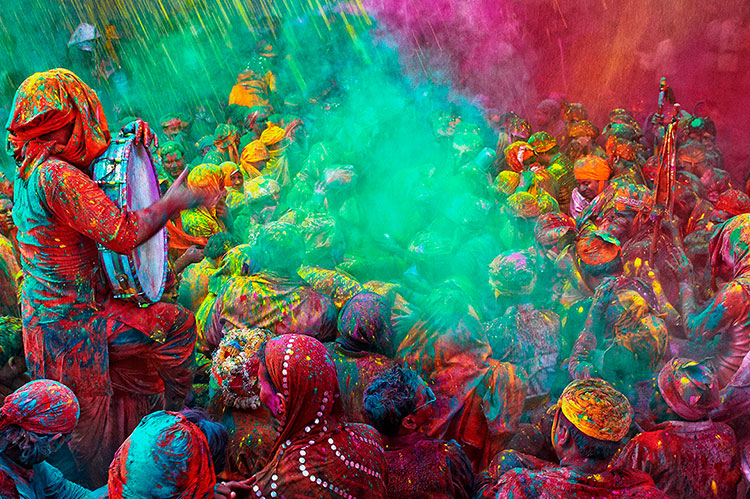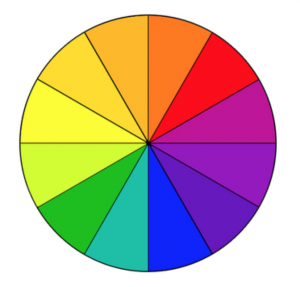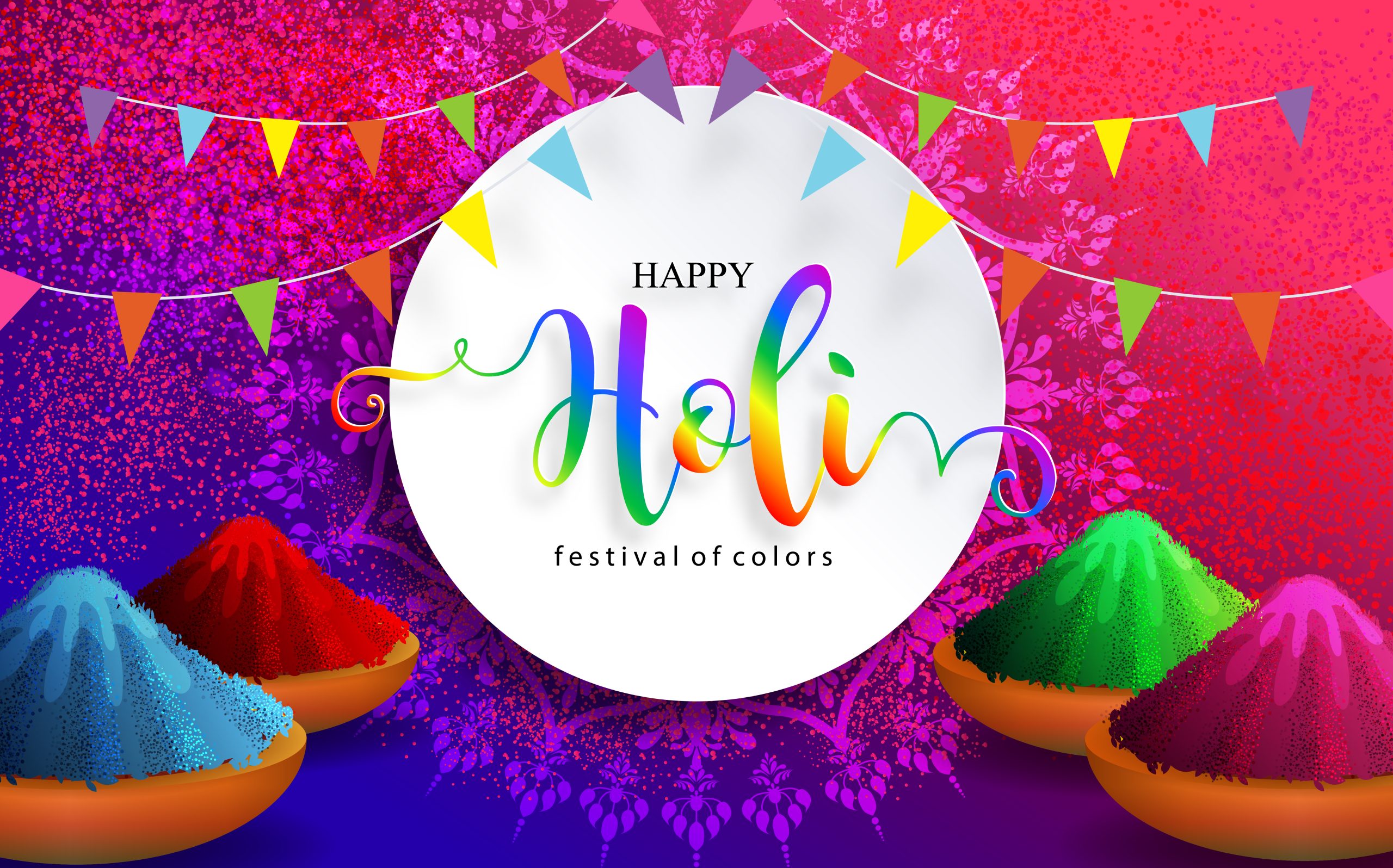
With a diverse culture and countless traditions, India is a land where each festival holds significance and Holi is one of them. Being the festival of colours, emotions and happiness. Holi is considered one of India’s most respected and celebrated festivals. On this auspicious day, people are united and they forget about all the grudges they hold towards each other, which is why it is also sometimes called the “It’s a love feast.” It lasts one day and one night, commencing on Purnima, or the Full Moon Day in the month of Falgun. It is celebrated in the name of ‘Holika Dahan’ (burning of demon Holika) or ‘Choti Holi’ on the first night of the festival and is called ‘Holi’ the next day popularly known as ‘Basanta Utsav’ or ‘Spring Festival. It is known by distinct names and celebrated in a unique style in different parts of the country. Some of them are mentioned below:
होलिका दहन और होली कब है? जानें सही तिथि
Holika Dahan 2026 is on Tuesday, 3 March 2026 Holi 2025 is on Wednesday, 4 March 2026
What is Holi Festival and Why is it Celebrated?
-
Maharashtra’s Rang Panchami:
Popularly known as Rang Panchami or Sigma or Lampanchami (fifth colour) in Maharashtra. The celebration begins after the sunset in Purnima with the lighting of a pile of firewood (fiery Holika), which symbolises the victory of good over evil.
-
Uttar Pradesh’s Lathmar Holi or Holi Milan:
People of this state play Holi in an interesting manner, especially in the areas of Barsana, Mathura and Vrindavan. The men here are chased by the women with lathis or cane in their hands, playfully hitting them with the same. The men come prepared with shields or ‘dhaal’ in their hands and those on the sidelines chat ‘Sri Krishna’. This is celebrated a week before Holi. Thousands of people gather to mythological watch this quirky way of celebrating the festival. Holi is celebrated for seven days in Kanpur, including a major festival called ‘Gangamela’ or ‘Holi Mela’ on the last day. Whereas in Gorakhpur, They celebrate it as ‘Holi Milan’ and people visit each other’s homes, sing Holi songs and play with colours to express their love for each other.
-
Punjab’s Hola Mohalla:
A Day before Holi has celebrated Hola Mohalla which is accompanied by the display of martial arts, horse riding, people recites poetry, and pay tribute to the bravery of Sikh warriors also known as ‘Nihang Sikhs’ which is later followed by dance, music and colours.
-
Goa’s Shigmo:
Another interesting way of celebrating the festival which is accompanied by street dances, traditional folk songs, grand carnivals and much more. Shigmo is celebrated in two ways: ‘Dhakto Shigmo and Vhadlo Shigmo,’ which means tiny Shigmo and huge Shigmo, respectively. Dhakto Shigmo is celebrated by the farmers, rural people and labourers.
-
Udaipur’s Royal Holi:
On the eve of Holi, the present custodian ignites the bonfire and burns the puppet of ‘Holika’. Followed by the royal band and a colourful procession of painted horses. It’s quite the show!
-
Uttarakhand’s Kumaoni Holi:
For the rural town, it marks the start of the harvest period. Folks light the Holika pyre, also known as ‘Cheer’, which is a bonfire with a green Paiya tree trunk in the midst. Holi is celebrated in three different ways in India:
Baithaki Holi: The villagers do a musical performance using classical instruments and sing songs. The songs are based on traditional ragas, with a dash of spiritualism, laughter, and melody sprinkled on top.
Khadi Holi: Men are clothed in traditional clothing as they sing and dance on Holi tunes with instruments like the ‘Dhol and ‘Hurka.
Mahila Holi: As the name implies, this festival is exclusive for ladies (Mahila) and is a variation of Baithaki Holi.

-
Kerala’s Manjal kuli:
Holi is not as common in the south as it is in other regions. Kerala, on the other hand, has its own set of rituals around this time, complete with traditional folk music and turmeric-based watercolours. Locals, particularly from the Konkani and Kudumbi populations (who moved from Goa), attend the temple on the first day and continue the celebrations on the second day.
-
West Bengal’s Dol Jatra:
In West Bengal, the ‘Basant Utsav’ or ‘Dol Jatra’ is held to greet the spring season. This day is marked by a special celebration at Shantiniketan. People assemble to worship Lord Krishna and do pujas. On this day, devotees arrange Radha and Krishna’s idols in a palanquin decked with garments, flowers, and leaves. While the ladies sing religious hymns and dance around the swings, the males spray coloured water and powder known as ‘beer.’ This was all about how Holi is enjoyed in different parts of our country.
Why do we celebrate it in the first place? The answer to the question lies in the next paragraph. Holi is an ancient Hindu festival that anticipates the advent of spring after a long winter. It has now gained popularity among non-Hindus as well. It celebrates the triumph of good over evil and is a day of joy and love. It also expresses gratitude for a successful crop.
The mythological story behind this Festival:
According to the Bhagavata Purana, Emperor Hiranyakashipu—the king of evil Asuras who could not be destroyed by either a man or an animal—became conceited and demanded that everyone worship him as a god. Prahlada, the king’s son, disagreed and opted to stay loyal to Vishnu. Hiranyakashipu became enraged and sentenced his son to severe punishments. Finally, the king’s sister, Holika, duped him into joining her on a pyre. Prahlada remained exposed while Holika was shielded by a cloak. The cloak fell from Holika’s head and enveloped Prahlada, protecting his life as the flames raged.
Vishnu then descended in the form of Narasimha, a half-man, half-lion who slew the monarch. This is why Holi starts with the Holika bonfire, which symbolises the triumph of good over evil.
Another mythology states that Lord Krishna’s complexion became a distinctive blue colour when a demon poisoned him with her breast milk. Krishna was frightened that because of his skin colour, the fair-skinned Radha and her pals would never accept him. Krishna’s mother then urged him to approach Radha and spread any colour he desired on her face. In the Braj area of India, the lighthearted colouring grew into a ritual and, eventually, a celebration is known as Holi. The Holika bonfire, which symbolises the end of evil, kicks off Holi.
Various traditions of Holi:
Aside from setting a fire, additional rituals include recycling the ashes from the fire to light the burner at home, preparing special treats, and playing with colours.
-
Starting a Bonfire:
The first rite that marks the start of the celebration is lighting a bonfire on the full moon night of ‘Phalgun.’ People gather in an open place on the occasion of Holi to start bonfires consisting of dead leaves, twigs, and wood. The ashes from this sacred fire are then used to start their household flames at home.
-
Playing With Colors, or Dhuleti:
The next day, the feast of colours, also known as ‘Dhuledi,‘ is celebrated. Adults and children spread vibrant colours and paint on each other or use water jets known as ‘pichkaris’ to shoot coloured water on passers-by at this time. Colours are made in many families using a traditional colour preparation method known as ‘abeer.‘
-
Paying Visits to Family and Friends:
The tradition is incomplete without paying a visit to friends and relatives and exchanging gifts with them. On Holi, the youngsters greet their elders by touching their feet for blessings and presenting sweets to them. Families then go to their relatives’ or friends’ houses to celebrate Holi together, basking in the spirit of togetherness and bringing the community closer together.
-
The Meal Preparation:
Food is an important aspect of Holi, and it is one of the factors that keeps both adults and children stimulated on the festival’s day. Making exquisite sweets and treats is significant, especially for the ladies in the family, and the scent of freshly prepared sweetmeats with ‘Desi Ghee’ frequently greets the morning. In parts of Maharashtra and south India, the sweets ‘Gujjias’ and ‘Puran Poli’ are the most popular. As part of the customs, ‘Thandai’ (a refreshing drink prepared with almonds, milk, sugar, and spices) is offered in huge amounts and is frequently blended with ‘bhaang‘ (an intoxicating element). Although ‘Bhaang’ is considered intoxicating, it is drunk as part of the Holi celebrations.
Significance of colours:

Since it is a festival of colours each colour holds significance in Hindu mythology. The most prevalent colour of Holi is Red, which is used to embrace the Gods and Goddesses. Krishna, another avatar of Vishnu, is said to be represented by Blue. Yellow is also associated with Vishnu, who is virtually usually represented wearing yellow clothing. The colour represents wisdom, study, and serenity.
Green is associated with Prince Rama, another representation of Vishnu, who spent the majority of his life enslaved in the forest. Green represents life, fresh beginnings, harvest, and virility. A new day is symbolised by the colour range, which is the colour of the sun. This is very perfect with Holi’s theme of new beginnings and forgiveness.
Holi is a festivity that brings India’s diverse people together. It embraces each tradition’s individuality and significance, instilling pride and teaching us the importance of defeating evil with virtue. “HOLI WISHES”
Holi Festival Calendar Between 2022 & 2029
| Years | Dates |
|---|---|
| Holi 2022 In India | Friday, 18th of March |
| Holi 2023 In India | Wednesday, 8th of March |
| Holi 2024 In India | Monday, 25th of March |
| Holi 2025 In India | Friday, 14th of March |
| Holi 2026 In India | Wednesday, 4th of March |
| Holi 2027 In India | Monday, 22nd of March |
| Holi 2028 In India | Saturday, 11th of March |
| Holi 2029 In India | Thursday, 1st of March |
FAQs About When is Holi 2026 in India?
When is Holi in India 2026?
Holi 2026 (Rangwali Holi) is on Wednesday, March 4, 2026
What is the real date of Holi in 2026?
Holi 2026 in India is celebrated on Wednesday, March 4, 2026.
3 March 2026 is the time for Holika Dahan.
What is Holi?
Holi is a vibrant and joyous Hindu festival celebrated primarily in India and Nepal. Also known as the "Festival of Colors," it marks the arrival of spring and symbolizes the triumph of good over evil. Participants engage in lively festivities, including the throwing of colored powders, water balloons, and various cultural performances.
When is Holi 2026?
Holi is a two-day festival, with the main day known as Holi falling on March 4, 2026. The festivities begin on the evening of March 3 with Holika Dahan, a ritual involving the lighting of bonfires.
How is Holi celebrated?
Holi is celebrated with enthusiasm and exuberance. People gather to play with colored powders (gulal), water balloons, and engage in various cultural activities. It is a time of joy, sharing sweets, and merriment with family and friends.
Are there any traditional rituals associated with Holi?
Yes, one of the key rituals is Holika Dahan, where bonfires are lit to symbolize the triumph of good over evil. People also perform poojas and seek blessings for prosperity and well-being. It's a time for forgiveness and starting anew.
Is Holi only celebrated in India?
While Holi has its roots in India, its popularity has spread globally. Many communities around the world, especially in regions with a significant Indian diaspora, celebrate Holi with fervor. Festivities may vary, but the essence of colors and joy remains constant.
Are there any safety precautions for celebrating Holi?
Yes, it's essential to take some precautions. Use organic and safe colors to avoid skin allergies. Protect your eyes and avoid throwing colors at people who do not wish to participate. Be cautious with water usage, and ensure the safety of pets during the celebrations.
Can anyone participate in Holi celebrations?
Absolutely! Holi is a festival that welcomes people of all ages and backgrounds. It's a time for unity and joy, and everyone is encouraged to join in the festivities.
What should I wear for Holi?
Wear old clothes that you don't mind getting stained, as the colored powders used during Holi can leave lasting marks. It's also a good idea to apply oil or moisturizer on your skin and hair before participating to make it easier to wash off the colors later.
How can I organize a Holi celebration in my community?
To organize a Holi celebration, gather a group of enthusiastic individuals, plan activities, arrange for safe and organic colors, and ensure proper waste disposal. Make sure to get the necessary permissions and inform the community in advance.


